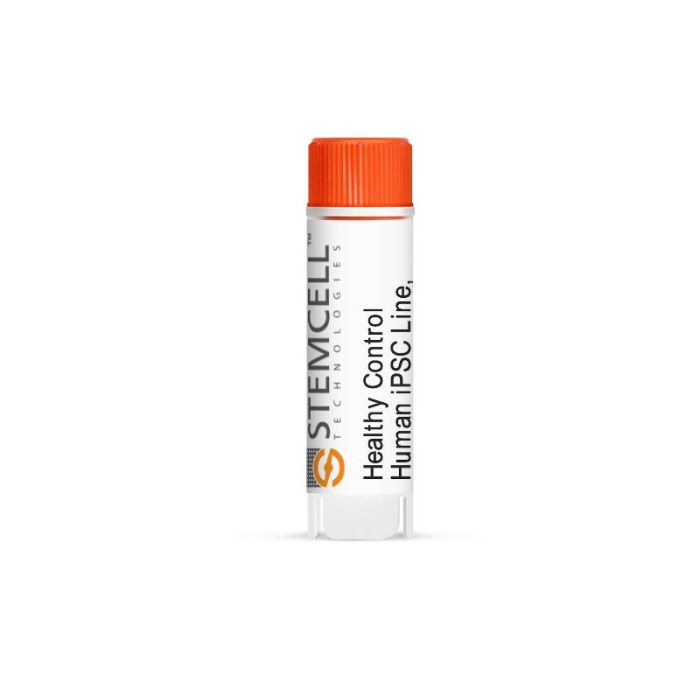产品号 #200-0769_C
人多能干细胞系,冷冻
若您需要咨询产品或有任何技术问题,请通过官方电话 400 885 9050 或邮箱 info.cn@stemcell.com 与我们联系。
人多能干细胞系,冷冻
人多能干细胞系,冷冻
选择来自 STEMCELL 的男性人诱导多能干细胞(iPSC)细胞系 SCTi004-A,为您的研究提供可靠、高质量的细胞来源。SCTi004-A 源自健康男性供体外周血单核细胞 (PBMC),适用于多种应用,例如用作未受影响的对照、基因编辑或下游分化为谱系特异性细胞类型和类器官。
为确保最佳产品性能和可重复性,SCTi003-A 采用严格的质量控制程序,在由mTeSR™+,康宁®Matrigel®hESC-Qualified Matrix,以及ReLeSR™组成的培养体系中生产。SCTi004-A核型稳定,具有三胚层分化潜能,表达未分化细胞标志物,并采用非整合重编程技术进行重编程。已在hPSCreg®注册,确保依据行业共同标准,符合伦理合规与生物一致性。
SCTi004-A已通过STEMdiff™试剂盒在 2D 和类器官模型中针对多种谱系和组织类型的分化验证(图6-11)。选择TeSR™和STEMdiff™细胞培养基产品,为您的细胞培养系统建立完整的工作流程。关于不同基因型的对照 iPSC 细胞系,请参阅我们的所有高质量、健康的女性和男性人iPSC对照系。
本产品仅供研究使用 (RUO),已获得学术和商业用途许可。血样采集符合伦理规范,遵循经过机构审查委员会(IRB)或其他监管机构批准的知情同意书与方案。有关供体详细信息和源细胞库的细胞质量表征,请参阅本页的数据图表。如需了解更多详情,请参阅批次特定的分析证书和诱导多能干细胞系常见问题解答。
全外显子组和全基因组序列数据文件可根据要求提供。请联系我们获取报价。
部分产品只在特定地区有售。在特定地区销售。如需了解更多信息,请联系当地销售代表或产品与科学支持团队,邮箱地址:techsupport@stemcell.com。
成分说明
CryoStor® CS10
分类
冻存
细胞类型
多能干细胞,健康对照
物种
人
细胞与组织来源
外周血,多能干细胞
研究领域
细胞系开发,疾病建模,药物发现与毒理检测,传染病,神经科学,类器官,干细胞生物学
供者状态
正常
Table 1. iPSC Line SCTi004-A Is Derived from a Healthy Male Donor

Demographic, health, and genetic characteristics of the SCTi004-A donor are compiled based on self-reported information and whole-exome sequencing. Sex was determined by karyotype. Ancestry and HLA haplotype were calculated from whole-genome and whole-exome sequencing combined data. Blood type (ABO/Rh blood group) was determined by next-generation sequencing. Height, weight, and BMI were calculated at the donation facility. iPSC = induced pluripotent stem cell.

Figure 1. SCTi004-A Human Pluripotent Stem Cells Demonstrate High-Quality Morphology in Routine Culture
Cryopreserved cells from line SCTi004-A were thawed and maintained in mTeSR™ Plus on Corning® Matrigel® Matrix. (A) The resulting iPSC colonies have densely packed cells and show multi-layering when ready to be passaged. (B,C) Cells retain prominent nucleoli and high nuclear-to-cytoplasmic ratios. iPSC = induced pluripotent stem cell.
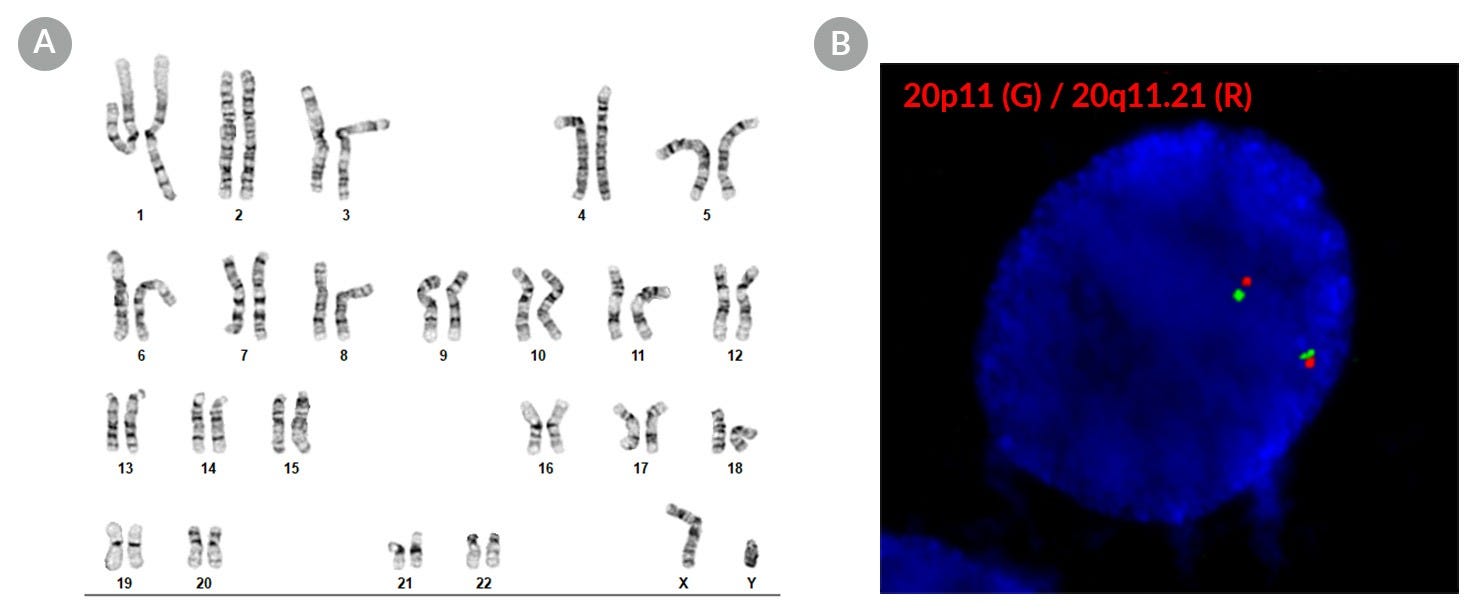
Figure 2. SCTi004-A Human Pluripotent Stem Cells Maintain a Normal Karyotype
(A) G-T-L banding for thawed cells at p20 (n = 20) shows a normal karyotype with no evidence of clonal abnormalities at a band resolution of 450 - 550 G-bands per haploid genome. (B) Fluorescent in situ hybridization in a representative p20 iPSC using probes for 20p11 (green) and 20q11.21 (red). 94% of cells examined displayed two sets of two probe signals, indicating no aneusomy of chromosome 20 (n = 200). iPSC = induced pluripotent stem cell.
Table 2. Single Nucleotide Polymorphism Microarray Analysis Characterizes SCTi004-A Copy Number Variants

DNA was extracted from a vial of SCTi004-A and subject to SNP microarray analysis to identify large-scale copy number variants (CNVs). The cells display no reportable CNVs, defined as those greater than 400kb in size. Array design, genomics position, genes, and chromosome banding are based on genome build GRCh37/hg19. chr = chromosome; start cyto = cytogenetic band at the start of the base pair imbalance; end cyto = cytogenetic band at the end of the base pair imbalance; bp = base pairs; SNP = single nucleotide polymorphism.
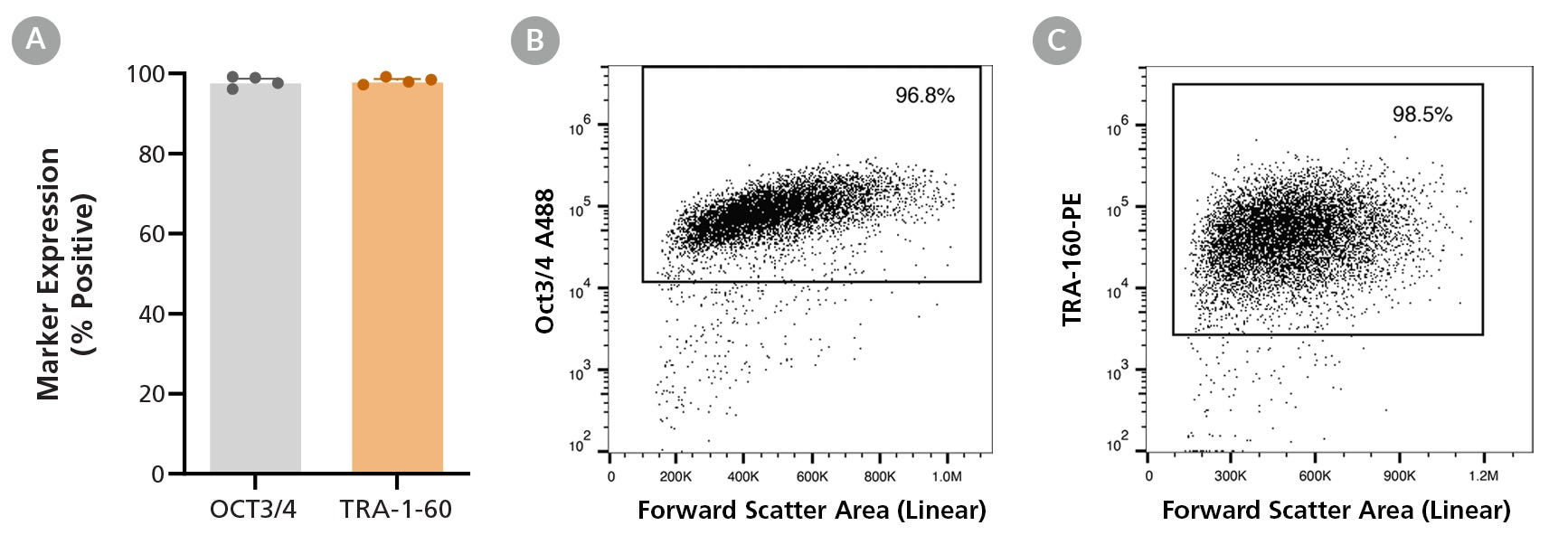
Figure 3. SCTi004-A iPSCs Express Undifferentiated Cell Markers
Cell line SCTi004-A was characterized using flow cytometry for undifferentiated cell markers OCT3/4 and TRA-1-60. (A) Percentage marker expression was quantified 5 passages after thawing from the analyses of four technical replicates. Representative flow cytometry plots are displayed for (B) TRA-1-60 and (C) OCT3/4. iPSC = induced pluripotent stem cell.
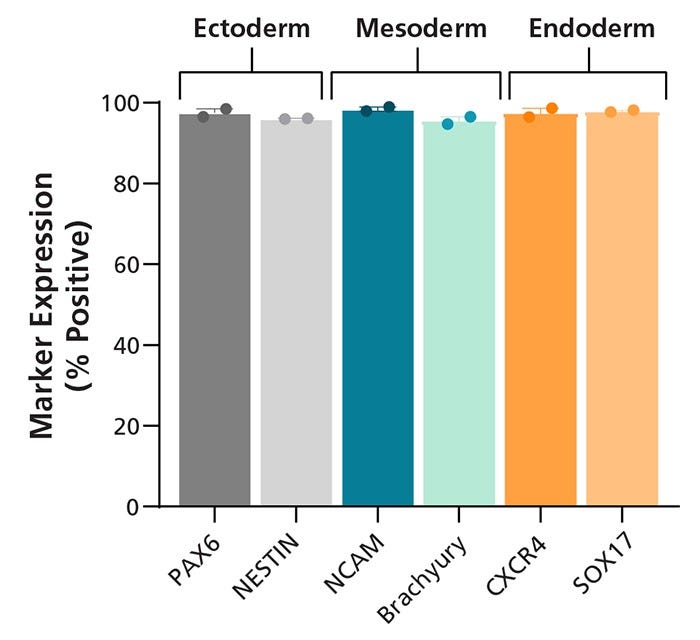
Figure 4. SCTi004-A Human Pluripotent Stem Cells Demonstrate a High Trilineage Differentiation Capacity
Cells from SCTi004-A were split into 3 groups, differentiated using STEMdiff™ Trilineage Differentiation Kit (Catalog #05230), and then subjected to flow cytometry analysis. Two markers for each embryonic germ layer were assessed, and bars present mean marker expression for each group of cells (n = 2 biological replicates). PAX6 and Nestin confirm differentiation to the ectoderm lineage, NCAM and Brachyury (T) to the mesoderm lineage, and CXCR4 and SOX17 to the endoderm lineage.

Figure 5. SCTi004-A iPSCs Can Form Hematopoietic Progenitor Cells (HPCs)
STEMdiff™ Hematopoietic Kit (Catalog #05310) was used to generate HPCs from the SCTi004-A cell line. (A) Percentages and yields of CD34+CD45+ HPCs per cm2 after differentiation. Error bars represent standard error (n = 5 biological replicates). (B) Brightfield image of SCTi004-A-derived HPCs indicates that these cells transitioned through a typical endothelial-to-hematopoietic transition (EHT).
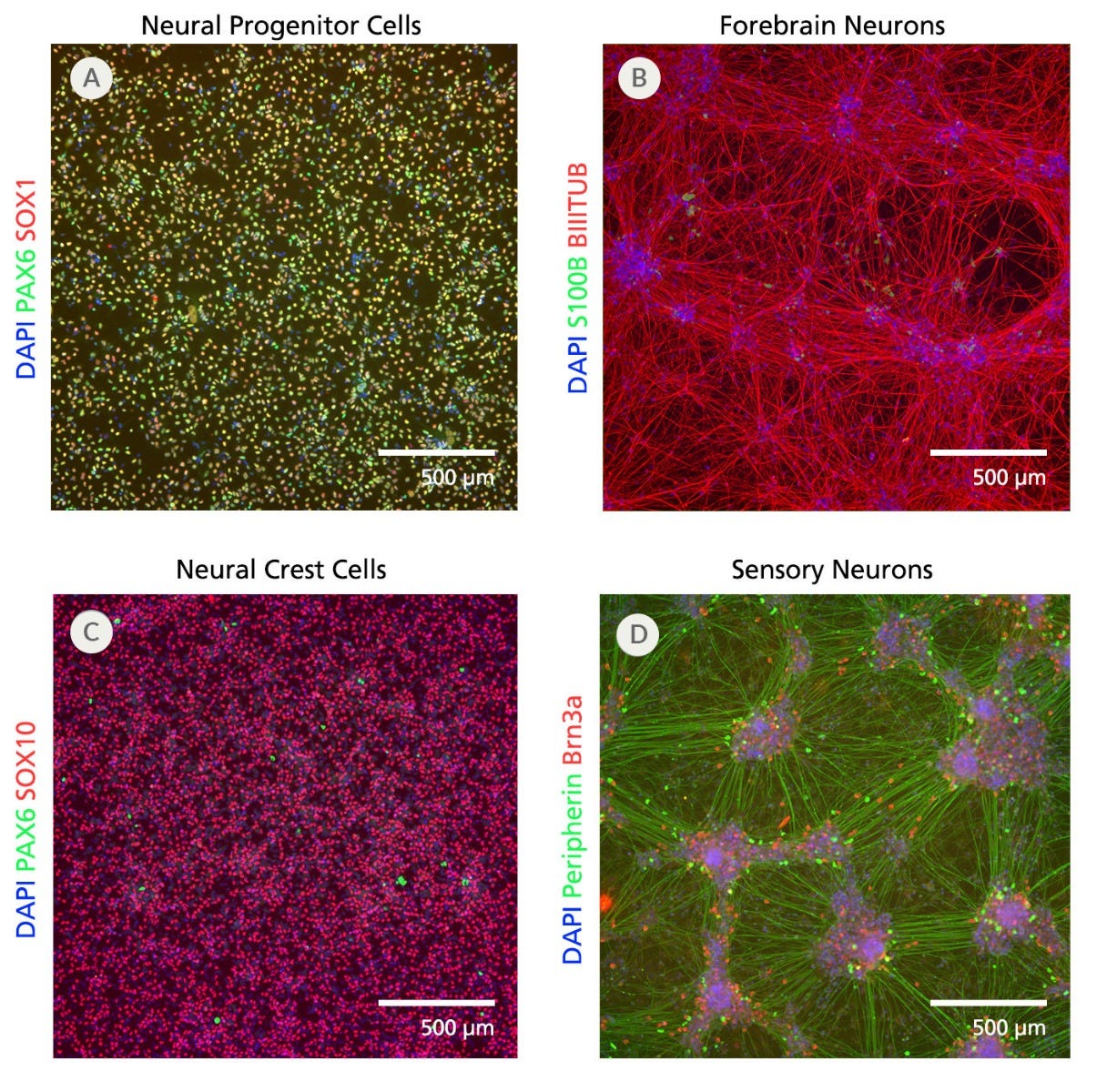
Figure 6. SCTi004-A Human Pluripotent Stem Cells Can Efficiently Differentiate into Neural Progenitor Cells, Forebrain Neurons, Neural Crest Cells, and Sensory Neurons
(A) SCTi004-A iPSCs were differentiated into (A) neural progenitor cells using STEMdiff™ SMADi Neural Induction Kit (Catalog #08581), (B) forebrain neurons using STEMdiff™ Forebrain Neuron Differentiation Kit (Catalog #08600), (C) neural crest cells using STEMdiff™ Neural Crest Differentiation Kit (Catalog #08610), and (D) sensory neurons using STEMdiff™ Sensory Neuron Differentiation Kit (Catalog #100-0341). See the respective product information sheets for more information and the protocols used.
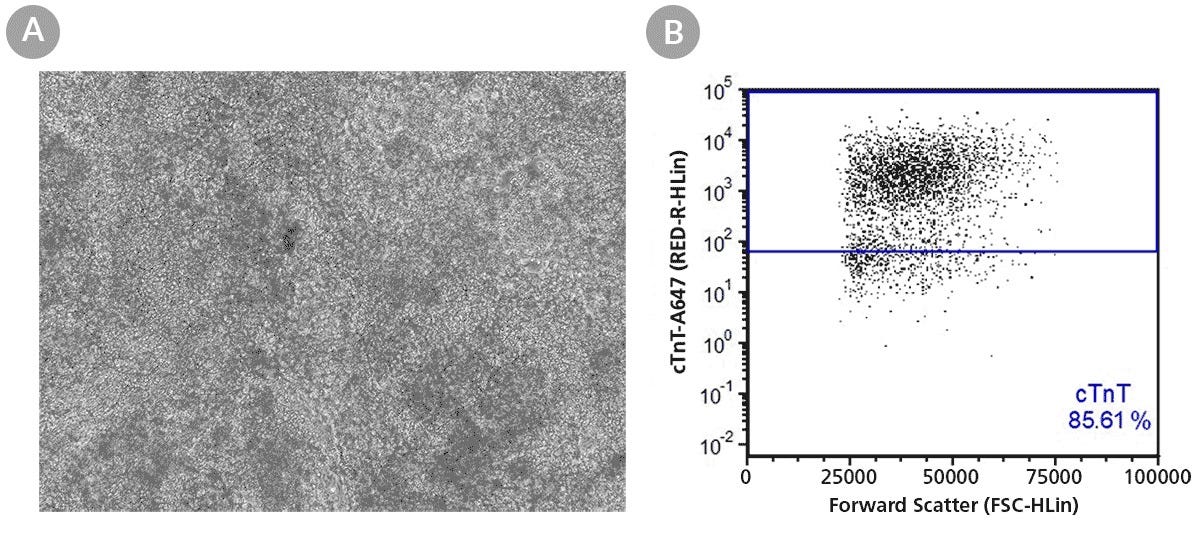
Figure 7. SCTi004-A Human Pluripotent Stem Cells Can Successfully Differentiate into Ventricular Cardiomyocytes
Ventricular cardiomyocytes were generated from SCTi004-A iPSCs using STEMdiff™ Ventricular Cardiomyocyte Differentiation Kit (Catalog #05010). (A) Monolayer cultures at Day 15 of differentiation show iPSC-derived ventricular cardiomyocytes that exhibit beating behavior. (B) Of the resulting cells, 86% express cardiomyocyte marker cTnT, as detected by flow cytometry.

Figure 8. SCTi004-A Human Pluripotent Stem Cells Can Successfully Differentiate into Intestinal Organoids
(A) SCTi004-A iPSCs were seeded for differentiation with STEMdiff™ Intestinal Organoid Kit (Catalog #05140). (B) By Day 3, the monolayers show more uniformity and display characteristics of patterning to definitive endoderm. (C) After switching to mid-/hindgut medium, 3D structures become visible atop the monolayer culture, and (D) spheroids detach from the mid-/hindgut culture at Day 7 of differentiation. (E) Collections of spheroids can be embedded in Matrigel® domes for subsequent maturation into human intestinal organoids, which (F) expand significantly after just 6 days in matrix. The maturing organoids can be passaged and expanded using STEMdiff™ Intestinal Organoid Growth Medium (Catalog #05145). iPSCs = induced pluripotent stem cells.
Table 3. Comprehensive Risk Variant Profile for the SCTi004-A iPSC Line

The table presents risk variants identified for the SCTi004-A iPSC line. DNA was purified from the master cell bank, and whole-genome sequencing was performed to capture the entire genomic landscape. Sequencing was conducted on the NovaSeq 6000 System, achieving a 50x coverage. Coverage of coding regions and adjacent splice junction sites was enhanced for 20,000 genes using the SureSelect Human All Exon V6 Kit (Agilent Technologies). Variants were called and analyzed following GATK4 best practices, incorporating a Convolutional Neural Network to score each variant. High-confidence variants were annotated with predicted functional consequences and ClinVar IDs. ClinVar entries required two or more supporting ALT reads and an assertion criteria of one gold star or more in ClinVar to be considered. This comprehensive profile assists in understanding the genetic landscape and potential health impacts associated with the SCTi004-A iPSC line.
Note that the classification of variants as pathogenic or likely pathogenic is provided by ClinVar and STEMCELL has not verified its accuracy. Further, this reflects knowledge at the time the report was generated, and the classification of variants as pathogenic or likely pathogenic may change over time.
请在《产品说明书》中查找相关支持信息和使用说明,或浏览下方更多实验方案。
本产品专为以下研究领域设计,适用于工作流程中的高亮阶段。探索这些工作流程,了解更多我们为各研究领域提供的其他配套产品。
Thank you for your interest in IntestiCult™ Organoid Growth Medium (Human). Please provide us with your contact information and your local representative will contact you with a customized quote. Where appropriate, they can also assist you with a(n):
Estimated delivery time for your area
Product sample or exclusive offer
In-lab demonstration
| 物种 | 人类 |
|---|---|
| Contains | CryoStor® CS10 |
| 细胞与组织来源 | 外周血, 多能干细胞 |
| 捐献者身份 | 正常 |
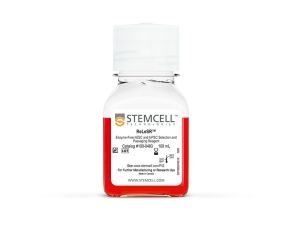
cGMP级、无酶的人多能干细胞选择与传代试剂
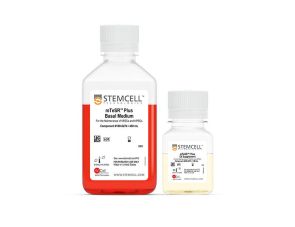
cGMP,稳定无饲养层维持培养基,适用于人ES和iPS 细胞
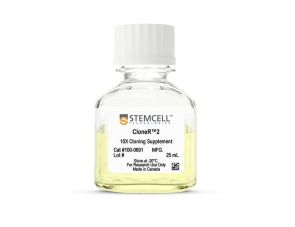
用于提高人胚胎干细胞和有道多能干细胞在单细胞工作流程中的存活率添加物
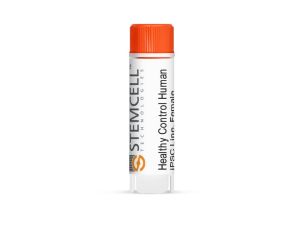
人多能干细胞系,冷冻
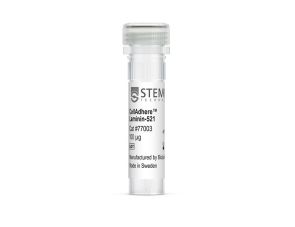
与 TeSR™ 维持培养基配合使用,用于维持人胚胎干细胞(ES)和诱导多能干细胞(iPS)的基质
法律声明:
LIMITED USE LICENSE These hiPSCs and their modifications (including but not limited to derivatives or differentiated progeny) shall not be used or administered in (1) human subjects for human clinical use; (2) animals for veterinary use for therapeutic, diagnostic, or prophylactic purposes or (3) any subject in relation to clinical applications, cell therapy, transplantation, and/or regenerative medicines, without limiting the generality of the foregoing. These hiPSCs and their modifications (including but not limited to derivatives or differentiated progeny) may not be used for monetization or commercialization purposes, including without limitation, used to, or with the goal to, perform services or supply products or rights, including in the manufacture of cellular therapies or other therapeutics, for monetary gain or the generation of royalties, revenues, sales or other valuable consideration. For clarity, these hiPSCs and their modifications (including but not limited to derivatives or differentiated progeny) may not be used for screening compounds, antibodies, proteins or peptides, except for the purposes of target discovery, target validation, or assay development, provided such activities and the results of such activities are not further used for monetization or commercialization purposes. It may be possible to obtain a further license for the prohibited uses referred to in this Limited Use License. Please contact iPSCrequests@stemcell.com for more details.
质量保证:
本产品仅供科研使用,除非另有说明,不得用于人体或动物的诊断或治疗用途。如需了解 STEMCELL 的质量体系,请访问 www.stemcell.cn/compliance
扫描二维码或搜索微信号STEMCELLTech,即可关注我们的微信平台,第一时间接收丰富的技术资源和最新的活动信息。
如您有任何问题,欢迎发消息给STEMCELLTech微信公众平台,或与我们通过电话/邮件联系:400 885 9050 INFO.CN@STEMCELL.COM。
在线联系

